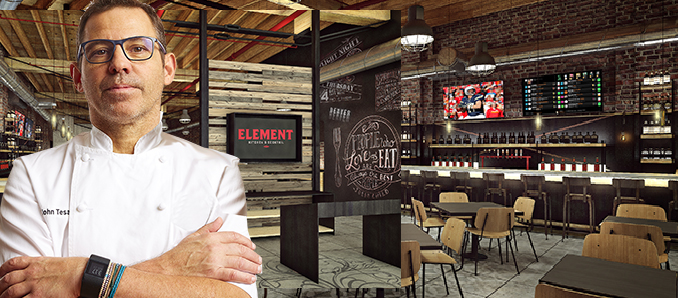All branches of the foodservice industry have had to take major steps to adapt to the current global circumstances presented by the pandemic. The need to remain competitive is not enough. Now it is a matter of survival.
The best way to combat the multiplying business risks of any foodservice operation is to be able to react and transform in an instant. Innovative business practices are key throughout the industry. Operations are becoming more and more digitized to ensure that brand standards survive during the labor shortages of the “Great Resignation.”
Leadership’s enforcement of innovation and new policies is also vital. Every aspect of the organization must adapt and evolve for survival. A proactive mentality and risk mitigation strategy are essential—and food safety technology is the solution.
It’s important to be able to predict fluctuating equipment temperatures and mitigate potential failures, especially in the back of the house. To achieve this, your team needs the proper training and tools to maintain active safety controls and efficient workflows.
The pandemic is pushing these challenges even further.
Many foodservice brands have been unable to survive. In fact, the National Restaurant Association reports that roughly 80,000 restaurants have already permanently closed.
Those that have survived must meet the consumer demand that their food is safe no matter what the format of delivery. Brands that can assure this level of safety ultimately gain the trust and loyalty of those consumers, which is a huge advantage in this volatile environment.
So, how can you compete in and navigate through the evolving challenges of the pandemic? Here are five strategic survival tactics.
Comply with ever-changing food safety guidelines and practices.
What you need is an application, like ComplianceMate, that automatically aggregates current guidelines and updates them all in one place in real-time. This allows you to keep up with the constantly changing health experts’ recommendations and best practices.
Streamline roles and quickly train employees.
The labor shortage means hiring new, very inexperienced employees that will need to quickly come up to speed on daily workflows. These new employees will require easy-to-use tools to complete food safety and cleanliness checks consistently and accurately.
Automated operational tools and workflow checklists ensure adherence to best practices and brand standards while using half the staff and cutting processing time.
Exceed the cleaning and sanitation requirements.
How do you know if all your locations are adhering to the upgraded sanitizing standards? ComplianceMate captures these processes and checklists directly within the application, documenting and validating that the appropriate cleaning actions have been taken on time and according to standards.
Focus on food safety for delivery, drive-thru, and takeout.
Now that the workflow has shifted to more delivery, drive-thru, and takeout, the risk of food temperatures falling into unsafe temperatures while it waits becomes a reality. Automating those related workflows ensures that safety standards are being met and checklists are completed as required and service levels remain high.
Transform how you manage multiple locations.
While you used to have to visit every location, now with ComplianceMate’s hierarchical view, you can see all your locations’ activities, alerts, and compliance to brand standards, without the need for travel. The dashboard provides customized views based on the users’ roles.
Following and reviewing automated standardized workflows and best practices will help your teams survive and thrive as they work through the maze of changing conditions, standards, and ongoing challenges.
Read Also: Retain Staff and Earn More – Food & Beverage Magazine
About ComplianceMate™
Through a patented combination of wireless temperature sensors, mobile technologies, and easy-to-use tools built for the modern commercial kitchen, ComplianceMate gives its users total control over workflows, food safety, and compliance in all types of food service establishments. Customers can make evidence-based decisions about kitchen processes and staff training. Users see a rapid ROI from significant labor and food waste savings, as well as improved audit scores.








